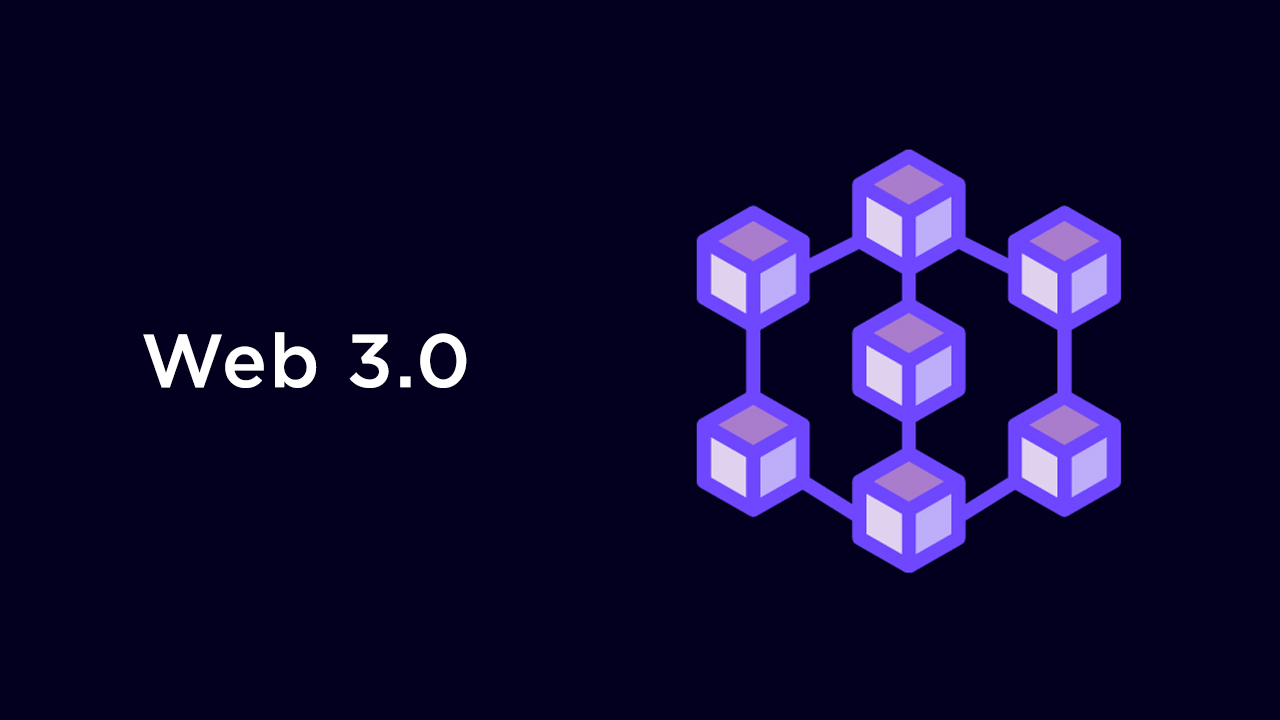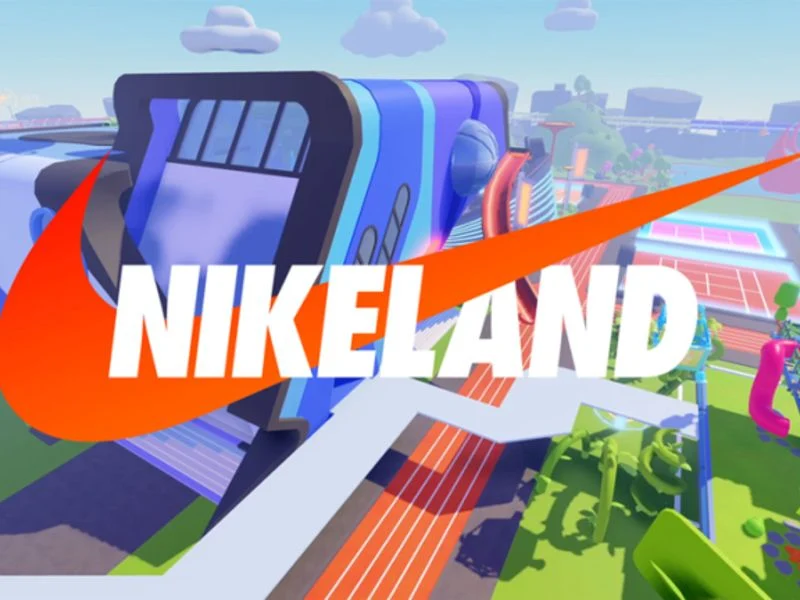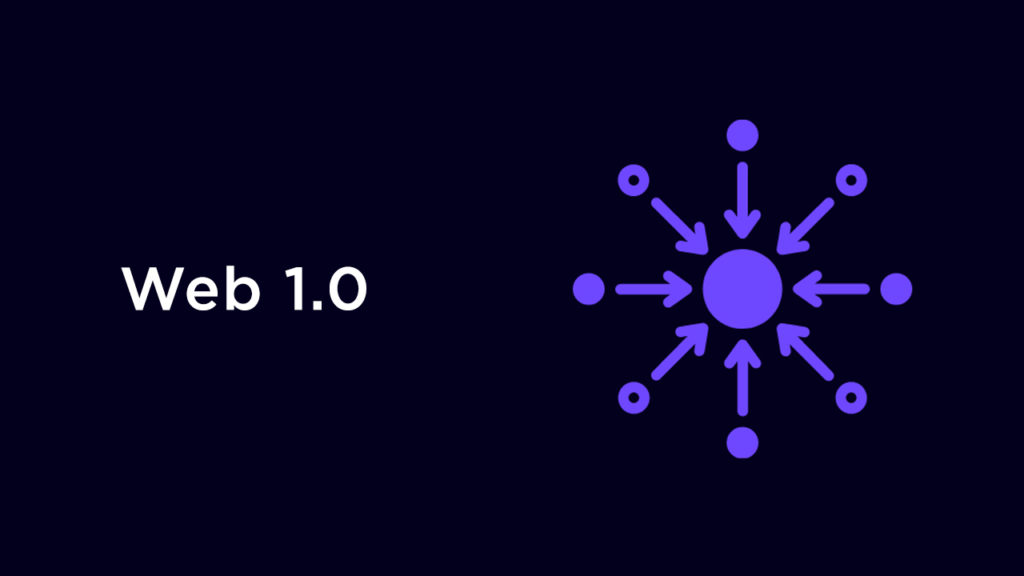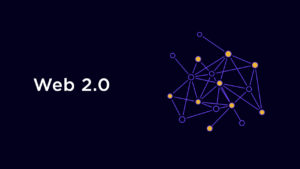Can you feel it in the air?
It’s FOMO Season. That good ol’ “Fear Of Missing Out” that rolls in when there’s some new trend or technology, rich in promise and bursting with buzzwords.
The bearer of today’s FOMO crown? Few would dispute the rule of Web3 and with it, the metaverse.
“Surprisingly” there are already a host of businesses with Web3 and/or the metaverse attached to their names or taglines, a legion of experts touting their many years of experience, and swarms of promises about its game-changing effects on commerce, society — perhaps humanity itself.
How can you even expect to catch up? Your FOMO must be telling you, “You’ll be lucky to even be considered left behind.”
Now that you’ve let your FUD (Fear, Uncertainty, Dread) run wild…let’s reality check this, shall we? Yes, Web3 and the metaverse matter. Beyond any hype (and there’s plenty) and critique (a healthy amount is always justified) this represents a significant evolution in the application layer for the internet. The infrastructure of the web is what powers what happens now…and next. As a leader, you want to understand what these new virtual worlds mean overall — and especially what it means for your business.
These are early days. There’s no missing out — yet. Let’s start filling in those knowledge gaps — and start looking for the opportunities this season of change brings with it.
As we begin our short journey let’s clear up something that confuses many newcomers to this space… Web3 and the metaverse are not the same thing. The metaverse is part of Web3. Just like an engine is to a car; the metaverse is a key component but only one of many. Specifically –
Web 3 is a new iteration of the World Wide Web which incorporates concepts such as decentralization, blockchain technologies, and token-based economics. Its core components are:
- Artificial intelligence
- Metaverse
- Smart Contracts
- Cryptocurrencies
- Blockchain
- Internet of Things
On the other hand, the metaverse is part of Web3 and is the virtualization of human life hosted on platforms in a digital space and facilitated by the use of one or more elements of extended reality (XR). At the moment there isn’t just one metaverse, there are several, like Roblox, Meta, Decentraland, etc.; and you can’t easily go from one metaverse to another – yet. One day all of these metaverses will be connected in someway but that is likely 2+ years away. BTW – some worlds, or metaverses, require a VR headset but most of the larger worlds can be played on your computer.
As you read this there are going to be acronyms that may be new to you–like XR. The acronyms are explained as they are used but if you want the full definition, see the list at the end of this article.
Web3 Times the Charm
No one needs a history lesson on the World Wide Web, but it’s helpful to understand the nomenclature of where we’ve been to understand where it’s all going.
In the Beginning, There Was Web 1.0…
The Internet’s first wave was — wait for it — Web 1.0. This began in a whole ‘nother century, in 1994. It ruled our cathode ray screens until 2000, with its static websites and their static pages of flat text and fixed graphics, zip-tied together with frames and tables by a relatively limited number of content creators. (We can be so judgmental here in the future.)
Many pages were personal, and in many cases web advertisements were actually banned. (
Let There Be Web 2.0…
With Web 2.0 (today’s web), the action became all about interactivity — a fundamental (and fun) shift in communicating and consuming information online in whole new virtual world. User-generated content became a thing, UX gained a prominent focus, and people could engage with one another through blogs and social media posts. The capacity of internet-connected computers — servers — became more important, and mobile apps made on-the-go access easier and more prevalent.
This is rightly considered the digital marketing explosion. Centralized platforms like Facebook and numerous other large technology companies paved the way for targeted advertising. By collecting an almost unfathomable amount of information on consumers, brands and businesses could understand their audience and customers better than ever plus they gained intimate insight into our new online lives.
This would take the form of geo-targeted ads; DTC brands like Warby Parker, and DTC platforms like Shopify; interest-based advertising; influencer marketing (especially influenced by Instagram); mobile ads; and sophisticated SEO strategies. (Clearly, that’s just scratching the surface of the screen!) With the know-it-all power of Web 2.0 behind them, marketers have been able to craft better campaigns and offers to entice (and sometimes even delight) customers.

And A Web3 Shall Lead Them…
Web3 — the eminently modern, internet-styled way to say “Web 3.0” — is what’s coming. It doesn’t wholesale replace the informational sites of 1.0 or the interactive and social interaction of 2.0 so much as build on it but in very different ways and with the potential to have an even greater impact on every aspect of our lives.
As 2.0 redefined the internet’s front end, and while Web3 will have massive impacts on the front end, it’s reasonable to say that its advancements are even greater on the back end, especially in terms of transferring data ownership from private entities to private citizens.
One term that overlays much of Web3 in this regard is “the Semantic Web”: a framework for information to be reused and shared more easily among programs, communities, and companies. More formally (or at least thoughtfully) Tim Berners-Lee offers this framework: “The Semantic Web is not a separate Web but an extension of the current one, in which information is given well-defined meaning, better enabling computers and people to work in cooperation.” (Tim’s the guy who invented the World Wide Web, so consider this “considerable opinion.”)
Another way to think about it is to imagine talking to a computer (and that’s what the Web of any number is) just as you’d talk to a friend. Natural words and conversations convey your requests — and the Semantic Web answers with more efficiency. (Think how Google Search — and your interactions with it — has evolved over time.)
This next-level data gathering and exchange with Web 3 is what will help to enable the idea of the metaverse — an evolving term for a virtual world within the Internet, where users can more fluidly immerse themselves to interact with each other and buy real and virtual products.
The real essence, or core, of Web3 is decentralization. While Web 2.0 stores information on a single server at a set location (predominately by big tech companies), Web3 data is stored simultaneously in various locations. In this way, control and decision-making moves from a Google or Facebook to a distributed network — where the data is owned by no central authority (except you – you have more control over your data than ever before), and the risk of server failures and data theft are significantly reduced.
Enabling this for decentralized companies is the smart contract: a program stored on a blockchain that runs when predetermined conditions are met. Smart contracts are the basic concepts that enable Web3 mechanics, exchanges, and ownership like NFTs (nonfungible tokens).
As Easy As 1-2-Web3
The web has never been a static thing, so the evolution of the internet’s infrastructure is a natural progression. The challenges of Web 2.0 in terms of data control and user privacy are complicated further by the fact that centralized storage creates a single and often vulnerable target for hackers and mayhem artists – your personal data is one of their top targets.
Web3’s solution to these problems is rooted in the personalization, immutability, and transparency of its contents of the semantic web and decentralization, as well as several other rapidly advancing core technologies and concepts:
Artificial Intelligence (AI)
It should come as no surprise that humans and computers speak different languages. Translating between them is inefficient, inelegant, and sometimes downright unnatural.
The type of AI that will change this is NLP: natural language processing. When Web3 computers can better understand and interpret human language, they will generate quicker and more accurate responses.
Ubiquity
A ubiquitous Web is one accessible by anyone, on any device, in any application. This Web3 goal underlies the so-called Internet of Things, or IoT — network-enabled devices that communicate with each other using internet protocol. Now your queries and preferences can follow you across your smart appliances, wearables, phones and more.
However, when it comes to ubiquity, Web3 and the metaverse are not there yet and won’t be for another ~2 years. Even the big worlds in the metaverse (Roblox, The Sandbox, Decentraland, Fortnite, etc.) are not connected; they and even use different in- world currencies.
Three-Dimensional (3D)
People understand each other when they’re together in a shared environment and experience. While that’s not always possible physically, Web3 is meant to enable the development of more apps that use 3D design. This is the visualization of products in 3D, as well as more fully immersive virtual reality (VR) and augmented reality (AR), and 3D product visualizations – all of which are encapsulated under “XR” (extended reality).
Blockchain
If Web3 didn’t raise your FOMO level, then the mention of “blockchain” would almost certainly crank it up. Web3’s integration with Blockchain technology powers much of what is considered essential. We can write an entire article on blockchain (and probably will), but the important concept is that the blockchain is a form of digital ledger, where every data transaction is noted in a fixed and transparent way but with greater security than today’s systems.
This creates the open data/security ecosystem that rids the future of centralized systems (in other words, you have more control over your data and a say in where it is used). Transparency is critical to customer trust — and that trust can be the bedrock for building better and more efficient brands and marketing strategies that connect those brands with customers.
WIIFM in Web3?
In Web 2.0, marketers only need to acquire, engage with, and retain their customers. Web3 carries a higher burden. The new burden comes under the notion “careful what you wish for”. As marketers one of our dream scenarios has always been one-on-one conversations with customers to understand what they need to hear in order to buy our products. The technology being deployed with Web3 gets us most of the way there with its one-on-one interaction, behavioral analysis and deeper analytics.
But, for all the “customers own their data” goals and promises…will businesses and brands really want to give up so much control over that data and allow customers to dictate its use? Do you?
These are important caveats to consider. But Web3 is happening. And rational concerns are more than offset by reducing your dependency on big tech. For SMEs, especially, the network effects of Web3 will protect them on many levels. It should eliminate fees for intermediate services, recommendations, and advertising. The diminished power of a monopoly puts bargaining power back in your hands. The end result should be better marketing products and services with fairer pricing over time.
Three Cheers for Web3
With introductory definitions and thoughtful considerations out on the table (or up on the screen, as the case may be) — what are some ways marketers can turn Web3 to their advantage? Here’s a trio:
- Build A Community
Web3 stands to usher in the next evolution in community marketing — expanding that beyond customers or users to also include developers, partners and even investors.
Web 1.0 depended on communities IRL (in real life) — things like where you were born, the teams you supported, or where you went to school.
Web 2.0 took you into the screen, where your community became a URL: an interest-based group on Facebook or Reddit, Twitch or Discord.
Web3 makes a community about agency and ownership. Being part of a community now is providing capital to run the community and gaining transparency and voting power.
Will the “community marketer” be the next in-demand professional? There’s certainly Web3 value in positioning yourself to build and engage a community, and connect it with existing communities, thought leaders, and influencers.
Marketers need to start now by establishing a clear purpose, grow a community around that purpose, and align additional growth strategies to serve that community and purpose (the concept of community isn’t different in Web3; the level of customer intimacy is vastly different).
- Make A Meme
Who doesn’t love a good meme? Someone from Web 1.0 perhaps. Because the Web3 community loves creating, sharing, and communicating with these digital ideas and concepts.
Speaking in memes is key to making projects relatable and growing a community. Their advantage to your marketing in a Web3 world is the fact they are approachable; human; elicit emotions; and function as something of a universal language on the internet.
- Leverage New KPIs
The goals, metrics and KPIs (key performance indicators) of Web 2.0 require some rethinking for your Web3 marketing. Like much of what will shape Web3, these KPIs are a work-in-progress but could take the form of:
– The size of your community across channels.
– The number of users voting or logging in and taking certain actions.
– The sell-out time or minimum price of an NFT. While the value of these has fluctuated dramatically in the last few months, they remain an interesting marketing tactic and price and demand could indicate both belief in the NFT project but also that your overarching marketing is delivering on its goals.
You’ll need to add some new KPIs to your metrics vocabulary to measure Web 3 and the metaverse. While gaming marketers are familiar with the “new measures of success”, they are not yet “mainstream” but will be in very short order. Here are a few examples:
Dau (Daily Active Users) – The number of unique customers/players engaging with you in the metaverse in a day.
Mau (Monthly Active Users) – The number of unique customers/players engaging with you in the metaverse in a month.

ARPPU (Average Revenue Per Paying User) – The average number of in-world currency (e.g. Robux) that a unique paying user/player in your virtual experiences. Calculated by dividing revenue by the number of unique paying players in your virtual experience.
DO (Day zero) – References the day on which a new user/player first played in your metaverse experience.
When it comes to crushing KPIs, Nike is at the forefront. So far this year Nike has generated $185M in revenue PI from its new metaverse experience. For Nike, this is a small number but for most companies, it’s significant and demonstrates how big things can get already.
If you’re looking for guidance and tips on getting your marketing started in the metaverse read our recent article – How to Start Marketing in the Metaverse.
The Future of Web3 Marketing
When it comes to Web3, here are two truths you can absolutely be certain of:
1. It’s not going away if you choose to ignore it.
2. It’s not happening on its own. It requires smart businesses that see the opportunities and begin to find ways to execute on metaverse development and the use of the technology that comes with Web3.
In case it’s not obvious – #2 is your invite, and hopefully your inspiration.
Even as they rapidly develop, Web3 and the metaverse are still in their infancy. For all the hyped headlines, no one knows for sure what marketing strategies and roles will look like as the infrastructure matures.
The imperative is to learn by thinking and doing. That’s what we’re doing at IDLab in partnership with our clients and we’re ready when you are to discuss your thoughts and needs when it comes to Web3, the metaverse and how we can help you take advantage of what is already a massive, and still growing opportunity.
Leave FOMO where it belongs — for others to worry about. In a Web3 world, embrace YOLO — “You Only Live Once.” As technology races ahead, be the marketer who moves fast and thinks creatively to reap early and sustainable advantages.
Acronyms and Definitions
Web3
A new iteration of the World Wide Web which incorporates concepts such as decentralization, blockchain technologies, and token-based economics. Its core characteristics are:
- Decentralized: instead of large swathes of the internet controlled and owned by centralized entities, ownership gets distributed amongst its builders and users.
- Permissionless: everyone has equal access to participate in Web3, and no one is excluded.
- Has native payments: it uses cryptocurrency for spending and sending money online instead of relying on the cumbersome infrastructure of banks and payment processors.
- Trustless: it operates using incentives and economic mechanisms instead of relying on trusted third-parties.
Core components of Web3 are:
- Artificial intelligence
- Metaverse
- Smart Contracts
- Cryptocurrencies
- Blockchain
- Internet of Things
Metaverse
The virtualization of human life hosted on decentralized platforms in a digital space and facilitated by the use of one or more elements of extended reality (XR).
XR
Extended reality is an umbrella term that covers VR, AR, and MR. All XR tech takes the human-to-PC screen interface and modifies it, either by 1) immersing you in the virtual environment (VR), 2) adds to, or augments, the your surroundings (AR), or 3) both of those which is mixed reality (MR).
Smart Contracts
Smart contracts are programs stored on a blockchain that run when predetermined conditions are met.
Blockchain
A blockchain is a digitally distributed, decentralized, public ledger that exists across a network. It consists of blocks of data/records that are joined together in a chain to carry the entire digital record of an event and/or transaction.
NFT
A non-fungible token is a record on a blockchain that is associated with a particular digital or physical asset. The ownership of an NFT is recorded in the blockchain, and can be transferred by the owner, allowing NFTs to be sold and traded.
Dau (Daily Active Users)
The number of unique customers/players engaging with you in the metaverse in a day.
Mau (Monthly Active Users)
The number of unique customers/players engaging with you in the metaverse in a month.
ARPPU (Average Revenue Per Paying User)
The average number of in-world currency (e.g. Robux) that a unique paying user/player spends in your metaverse experience. Calculated by dividing revenue by the number of unique paying players in your experience.
D0 (Day 0)
References the day on which a new user/player first played in your metaverse experience.
IoT
The Internet of Things (IoT) describes the network of physical objects—“things”—that contain sensors, software, and other technologies for the purpose of connecting and exchanging data with other devices and systems via the internet.
AI
Artificial intelligence is the simulation of human intelligence in machines that are programmed to think like humans and mimic their actions. There are four types of AI:
- Reactive AI uses algorithms to optimize outputs based on a set of inputs.
- Limited memory AI can adapt to past experience or update itself based on new observations or data.
- Theory-of-mind AI are fully-adaptive and has an extensive ability to learn and retain past experiences.
- Self-aware AI occurs when machines become sentient and aware of their own existence.
NLP (natural language processing)
NLP refers to the branch of computer science—and more specifically, the branch of artificial intelligence or AI—concerned with giving computers the ability to understand text and spoken words in much the same way human beings can. It combines computational linguistics—rule-based modeling of human language—with statistical, machine learning, and deep learning models. Together, these technologies enable computers to process human language in the form of text or voice data and to ‘understand’ its full meaning, complete with the speaker or writer’s intent and sentiment.
For a more comprehensive list of terminology used in Web3 and the Metaverse.






